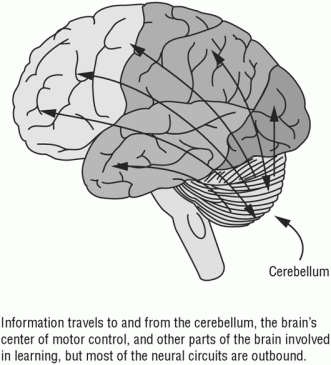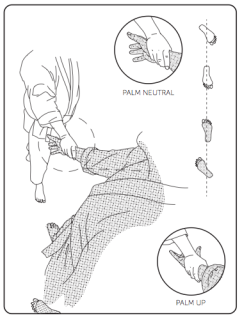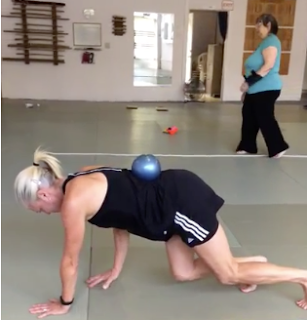Just how important is movement to learning? The vestibular (inner ear) and cerebellar (motor activity) system is the first sensory system to mature. In this system, the inner ear’s semicircular canals and the vestibular nuclei are an information-gathering and feedback source for movements. Impulses travel through nerve tracts back and forth from the cerebellum to the rest of the brain, including the visual system and the sensory cortex. The vestibular nuclei are closely modulated by the cerebellum and also activate the reticular activating system, near the top of the brain stem.

This area is critical to our attentional system, because it regulates incoming sensory data. This interaction helps us keep our balance, turn thoughts into actions, and coordinate movements. That’s why there’s value inplayground activities that stimulate inner-ear motion, like swinging, rolling, and jumping. A complete routine might include spinning, crawling, rolling, rocking, tumbling, and pointing. As noted in Chapter 2, Lyelle Palmer of Winona State University has documented significant gains in attention and reading from these stimulating activities (Palmer, 2003).
The area of the brain most associated with motor control is the cerebellum. It’s located in the back of the brain, just under the occipital lobe, and is about the size of a small fist. The cerebellum takes up just one-tenth of the brain by volume, but it contains nearly half of all its neurons (Ivry & Fiez, 2000). This structure, densely packed with neurons, may be the most complex part of the brain. In fact, it has some 40 million nerve fibers—40 times more than even the highly complex optical tract. Those fibers feed information from the cortex to the cerebellum, and they feed data back to the cortex. In fact, most of the neural circuits from the cerebellum are “outbound,” influencing the rest of the brain (Middleton & Strick, 1994). Peter Strick at the Veteran Affairs Medical Center of Syracuse, New York, has documented another link. His staff has traced a pathway from the cerebellum back to parts of the brain involved in memory, attention, and spatial perception. Amazingly, the part of the brain that processes movement is the same part of the brain that processes learning
Excerpts from Eric Jensen’s book “Teaching with the Brain in Mind” and published as part of a larger article on ASCD:
http://www.ascd.org/publications/books/104013/chapters/Movement-and-Learning.aspx





